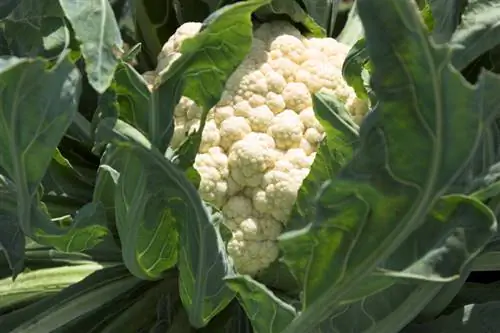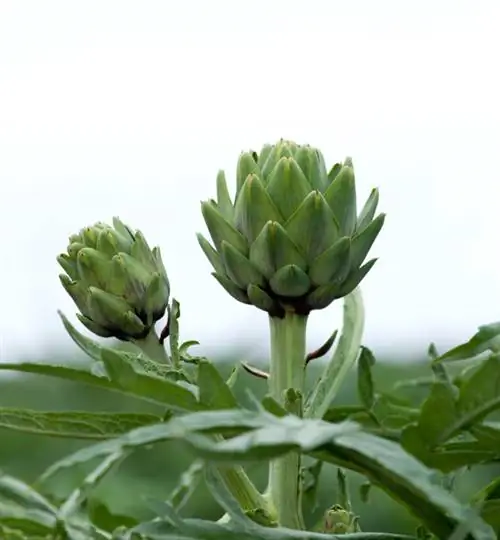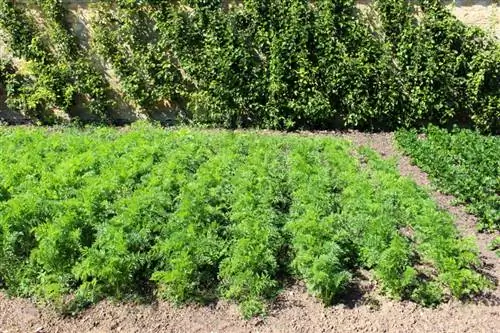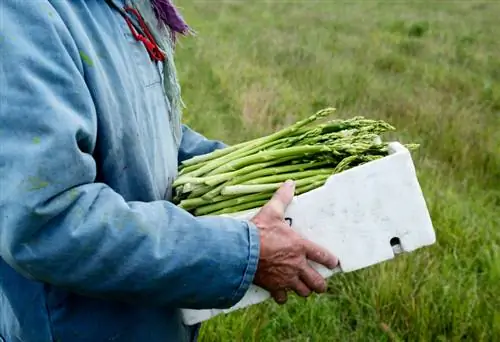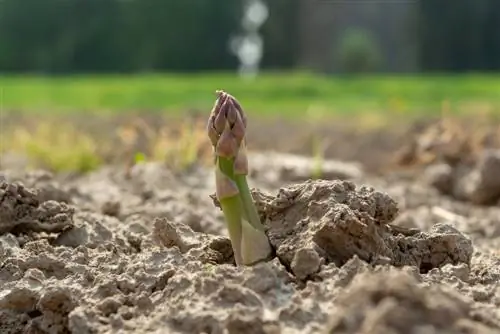- Author admin [email protected].
- Public 2023-12-25 17:45.
- Last modified 2025-01-23 11:19.
White, purple, yellow-green. Raw, steamed, boiled. Cauliflower (Brassica oleracea var. botrytis) impresses with its versatility. Like all cabbage vegetables, it is a leafy vegetable. You can find out how you can successfully plant this all-rounder in your garden in this article.
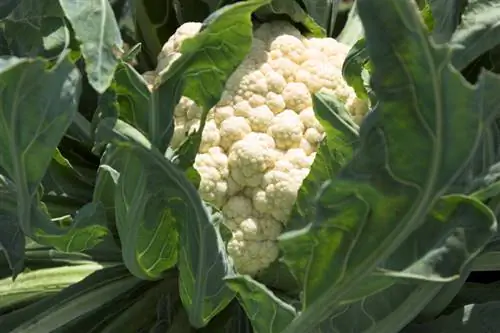
How can I successfully grow cauliflower in the garden?
To grow cauliflower successfully, you need humus-rich, medium-heavy soil, regular watering and fertilization, a suitable selection of varieties and good care against pests. A year-round harvest is possible if different varieties are grown.
Location requirements
The heavy feeder cauliflower prefers medium-heavy, humus-rich soils that are characterized by a high storage capacity for water and nutrients. Growing in sandy soil is difficult, but can be successful if watered and fertilized frequently. Because of the low storage capacity of these soils, the total amount of water and fertilizer should be divided into several portions. The cauliflower tolerates organic fertilizer, such as manure or compost. If you offer the demanding vegetables these location properties and sow overwintering varieties in July / August, then you can expect a
Almost year-round harvest
Choosing different varieties is a prerequisite for growing and harvesting from early spring to winter. The “Erfurt Dwarf” is suitable for sowing from February onwards; you can sow “Clapton” from March to May for the summer harvest. “Walcheren Winter” is a suitable overwintering variety, which is sown in June or July and transplanted to a wind-protected location in August. The following year, this variety can be harvested from April. The general rule is that transplanting can take place around 4-6 weeks after sowing. For a successful harvest, regularis required during the growing season
Care
This includes regular hoeing, watering and fertilizing. Nettle manure is particularly suitable. You should stop fertilizing around 4 weeks before harvest to ensure that the nitrate content of the plants remains low. It is important to regularly check the plants for pest infestation. The most important insect pests of cauliflower include:
- Cabbage white butterfly (Pieris), this butterfly lays its eggs on the underside of the leaves. The hatched larvae quickly destroy large masses of leaves from the end of May. The infestation can be prevented by laying out bird protection nets.
- Cabbage fly (Delia radicum), the fly lays its eggs on the root collar mainly in July. The damage caused is the subsequent grub eating, which can result in the death of young plants. Vegetable protection nets and rock dust sprinkled on the root necks prevent infestation.
- Flea beetles (Phyllotreta), these small beetles love drought and puncture the leaves of young plants. Keeping the soil moist and regular hoeing prevents infestation.
Clubroot (Plasmodiophora brassicae) is a slime mold that causes root deformation and plant death. After an infestation, you should no longer grow any plants from the cruciferous family on the bed in question for seven years.
Tips & Tricks
The cauliflower heads should not be exposed to the blazing sun. Simply bend some cauliflower leaves and place them over your head.

